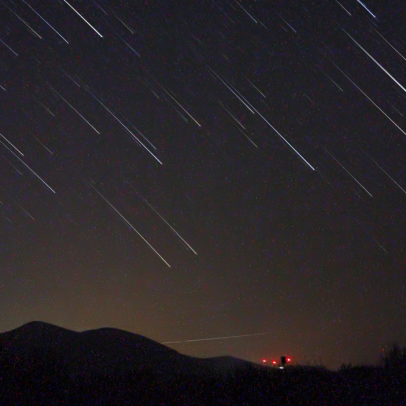Orionids Meteor Shower

Every year, beginning in late October, the Orionids meteor shower is visible all around the world. The meteors are spectacular sights if you can catch a glimpse of them. The meteors themselves are fragments from Halley’s comet, which is a meteor that orbits the sun. The meteors are visible annually, usually from October 20th to November 10th. Although there are other meteor showers throughout the year, the Orionids meteor shower is the most prolific shower associated with Halley’s comet.
Orionids were first discovered in 1839. They got their name from where they seem to appear from, the Orion constellation but can be seen abroad the sky. The Orionids are known for their brightness, speed and annual return. The most activity usually occurs on the 22nd of October, very early in the morning. At the showers peak, up to 20 meteors can be spotted every hour. The meteors can travel up to 148,000 miles per hour through earth’s atmosphere. If a particular meteor is going fast enough, it will leave a glowing trail of debris which make the resemble a fireball. These are what we call shooting stars.
Fun Fact: In the year 1066, the Orionids meteor shower made its annual appearance around the world. The observers in England saw the meteors as a bad omen while Duke William of Normandy saw it as a sign from heaven. England was under rule by the Anglo-Saxon king Harold. William and his army would land in England and defeat Harold’s army, ending the Anglo-Saxon reign and changing the course of England’s history.
The Orionids are fragments of Halley’s comet, which deposits the rock particles as it passes through the solar system. Halley’s comet takes around 76 years to orbit the sun and it will next be visible from earth in 2061. Halley’s comet is named after Edmond Halley, who discovered that three other comets orbit the sun every 76 years or so. Each time that the comet travels through our inner solar system, it sheds ice and rock into space. These pieces of ice and rock become meteors once they reach a certain speed. Our planet travels through the streams of ice and rock for extended periods of time, giving us showers.
Setting time aside to sit and watch the meteors is a great fall activity to do by yourself, with friends, or your significant other. If you want to be able to fully catch the experience of the meteors, go to an area that is far from any ambient light. Dress for the weather and bring a blanket or sleeping bag and lay on the floor, feet facing southeast if you are in the northern hemisphere of the world, and northeast if you are in the southern hemisphere. Facing the correct way can be the difference in seeing just one shooting star and seeing 20. Bringing a speaker and play music that fits the vibe can make the experience even more surreal. The meteor shower is visible all through the night until dawn. If you see one, make sure to make a wish!
Your donation will support the student journalists of Dakota High School. Your contribution will allow us to purchase equipment and cover our annual website hosting costs.

Drew Astorga is a senior at Dakota High School. Drew is interested in music, lifting, and wrestling. This is the first year that Drew is working on the...










